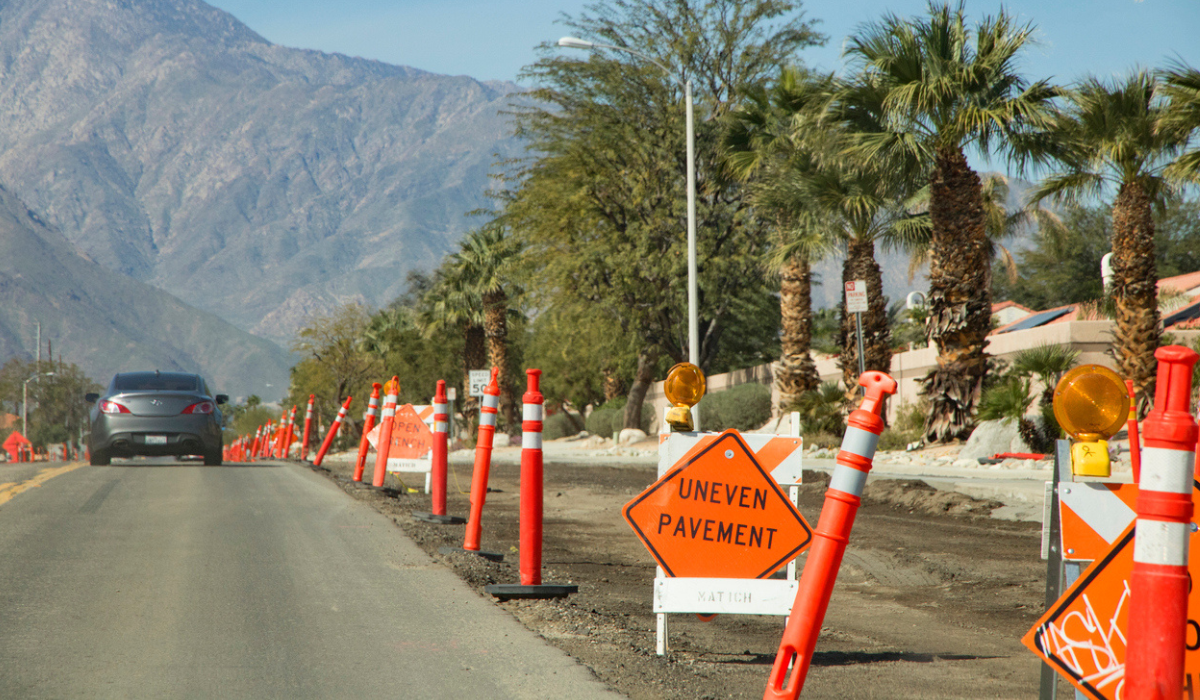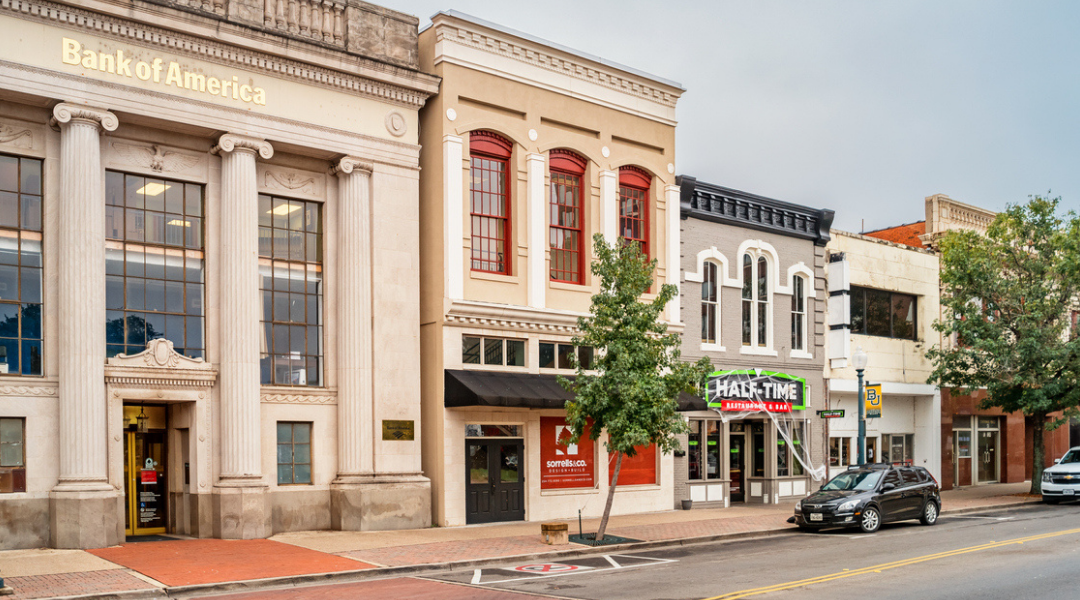Listen to this post
Post Summary
What is a California subdivision bond?
Why are subdivision bonds required in California?
Who needs a subdivision bond?
What are the benefits of subdivision bonds for developers?
How can BOSS Bonds help with California subdivision bonds?
California’s Subdivision Bond Requirements: A Guide for Land Developers and P&C Agents
With its sunny weather, diverse geography, and thriving economy, California is one of the most sought-after real estate markets in the country. As a result, it's ripe with residential and commercial land development opportunities.
Many California municipalities require subdivision bonds. These surety bonds ensure public infrastructure is built to code and completed on time, protecting the state financially from incomplete or substandard work. Property and Casualty (P&C) insurance agents who offer these bonds can provide their clients with valuable guidance while increasing their revenue potential.
So, what are subdivision bonds and why does California require them? In this guide, we’ll answer these questions, highlight the various types of subdivision bonds, and explain the key steps in the bonding process.
What Are California Subdivision Bonds?
Subdivision bonds (also referred to as site improvement bonds, developer bonds, or performance bonds), guarantee a developer or contractor will complete their public infrastructure obligations according to their projects’ specifications. In turn, these surety bonds guarantee that essential infrastructure is built and maintained according to municipalities’ standards.
If a developer fails to meet these standards, the municipality can file a claim against their subdivision bond. The surety company will then pay the municipality the bond amount so it can complete or improve the developer’s insufficient work. After that, the developer must reimburse their surety company.
Land developers, general contractors, and builders who work on large residential or commercial development projects may need to purchase subdivision bonds at some point during their careers.
4 Types of California Subdivision Bonds
In California, developers and contractors may need to purchase several types of subdivision bonds, depending on the scope of their project and their municipality’s regulations. Some of the most common types include:
- Improvement bonds are the most common type of subdivision bond. They guarantee that the developer will complete the necessary infrastructure improvements per city or county requirements. Failure to complete these improvements within a specified timeline can result in costly bond claims.
- Labor and materials bonds, also known as payment bonds, ensure that subcontractors, suppliers, and laborers are paid for their services and materials on time. Municipalities require these bonds to reduce their risk of lien claims.
- Monument bonds guarantee that survey markers and property boundaries are positioned according to municipal requirements. These bonds are most commonly required for large-scale projects where developers must map and survey land.
- Warranty bonds, also known as maintenance bonds, guarantee that any defects or maintenance issues are promptly addressed by the developer. These bonds are typically required for a specified period following a land development project’s completion.
Read More: 6 Types of Bonds Your Contractor Client Might Encounter
Why Does California Require Subdivision Bonds?
California’s subdivision bond requirements are designed to protect the public and ensure that developers fulfill their commitments. By establishing developers’ financial responsibility for project defects or delays, these bonds incentivize higher-quality work.
When developers fail to meet their obligations, subdivision bonds also help mitigate the risk that California cities or counties are left with incomplete roads, utilities, or other essential infrastructure by providing financial protection to cover the costs of completion or repairs.
California’s Subdivision Bond Laws and Regulations
California’s Subdivision Map Act governs projects that involve dividing land into smaller parcels. It ensures that these “lot splits” are carried out in a way that complies with public safety, infrastructure, and planning requirements.
All California lot splits involving new public improvements, from adding new utility lines to developing new drainage systems, require subdivision bonds. Minimum bond amounts are typically based on the cost of these public improvements.
California Government Code Section 66499 outlines more specific subdivision laws and requirements, including:
- What types of subdivision bonds are required
- How they must be issued
- How they’re enforced
Read More: Navigating Public Works Bonding Requirements in California
How to Secure a Subdivision Bond in California
As a land developer or contractor, you might be wondering about the subdivision bonding process. Here’s an overview of the key steps involved:
- Prequalification – Before you apply for a subdivision bond, you should review your finances, credit score, and previous project history. Surety companies will consider these factors when setting your bonding capacity. They want to make sure that you’re capable of completing your land development project and meeting all associated financial obligations.
Read More: 10 Tips for Increasing Your Bonding Capacity - Bond application – During your bond application, you’ll need to provide information about the scope of the project, its cost estimates, and your financial statements. Your bond approval will depend on your ability to showcase that you have sufficient resources and experience to complete the required infrastructure improvements.
- Underwriting considerations – Once you submit your application, your surety company’s underwriting team will review your financial health, past project experience, and industry reputation. They’ll use these factors to assess the risk of issuing your subdivision bond and set your bond premium accordingly.
- Bond approval – The timeline for subdivision bond approvals can vary depending on your project’s complexity and chosen surety provider. Once your subdivision bond is approved, you can submit it to the local municipal or governmental authority overseeing your project.
Common Subdivision Bond Challenges
Securing the right subdivision bonds can be a challenging process for developers and contractors, especially for larger projects that require multiple bonds or high bond amounts.
The most common challenges include:
- Financial insufficiency – Developers with poor credit or a history of financial instability may struggle to qualify for subdivision bonds or face higher premiums.
- High bond amounts – Large-scale land development projects often require multiple bonds. Thus, developers with low bonding capacities may struggle to get approved.
- Complex municipal requirements – Each city and county in California has distinct bonding regulations, which can add to the complexity of ensuring compliance.
How P&C Agents Can Support Developers with Subdivision Bonds
Developers and contractors may not always know what steps to take to secure the right subdivision bonds or to increase their bonding capacity. That’s where their P&C agents’ support can be invaluable.
If you’re a P&C agent, you can help your developer and contractor clients:
- Optimize their finances
- Understand their bonding requirements
- Apply for the right bonds for their land development projects
- Increase their bonding capacity over time
You can provide this support with ease by partnering with a surety-focused agency, like BOSS Bonds. Our team can simplify the bonding process for you and your clients, enabling you to expand your risk management offerings and increase your revenue potential while remaining focused on your core insurance products.
Read More: Common Mistakes P&C Agents Make with Surety Bonds & How to Avoid Them
Recent Trends and Developments in California Subdivision Bonding
California is currently facing a housing shortage, exacerbating affordability issues for renters and home buyers alike. As a result, California’s Department of Housing and Community Development is currently creating policies to address these problems:
- A lack of new homes – California has only added an average of 80,000 homes per year over the past decade. However, it needs an annual influx of 180,000 new homes to meet resident demand.
- Prohibitive cost of homeownership – As younger Californians struggle to enter the housing market, homeownership rates in California have hit their lowest levels since the 1940s. Lack of supply and rising costs are two contributing factors.
To increase the availability of affordable housing, California has been exploring ways to streamline the subdivision process. For example, Senate Bill 330 strives to speed up housing development by limiting local zoning restrictions and streamlining approval processes. While this bill isn’t directly focused on subdivision bonding, it creates a more efficient environment for developers.

Streamline Subdivision Bonding With BOSS Bonds
As you can see, subdivision bonds are a crucial requirement in California land development projects. If you’re a developer or P&C agent looking to learn more about these bonds and how to secure them, BOSS Bonds is here to help.
With over 40 years of experience in the surety industry, we offer competitive rates, expert guidance, and a streamlined bonding process to ensure your clients’ success. Contact our team today to learn more!
Sources:
Building in California. Bonds.
https://www.buildingincalifornia.com/bonds
Find Law. California Code, Government Code - GOV § 66499.
https://codes.findlaw.com/ca/government-code/gov-sect-66499/
California Department of Housing and Community Development. Addressing a Variety of Housing Challenges.
https://www.hcd.ca.gov/policy-and-research/addressing-variety-housing-challenges
California Legislative Information. Senate Bill No. 330.
https://leginfo.legislature.ca.gov/faces/billTextClient.xhtml?bill_id=201920200SB330
Key Points:
What is a California subdivision bond, and how does it work?
A California subdivision bond is a type of surety bond required by local governments to ensure that developers complete public improvements, such as:
- Roads
- Sidewalks
- Sewer systems
- Utilities
These bonds act as a financial guarantee that the developer will fulfill their obligations according to approved plans and specifications. If the developer fails to complete the improvements, the bond ensures that the government or stakeholders are compensated. Learn more about subdivision bonds on the BOSS Bonds Blog.
Why are subdivision bonds required for land development projects in California?
Subdivision bonds are required to:
- Protect local governments: Ensuring public infrastructure is completed without burdening taxpayers.
- Safeguard homebuyers: Guaranteeing that necessary improvements are in place for livable communities.
- Streamline development: Allowing developers to sell lots before completing public improvements, improving cash flow.
These bonds are a critical part of the Subdivision Map Act (SMA), which governs land development in California.
Who needs a subdivision bond, and when is it required?
Subdivision bonds are typically required for:
- Land developers: Dividing land into individual lots for sale or development.
- Property owners: Filing subdivision plans with local governments.
- P&C agents: Advising clients on bonding requirements for land development projects.
Developers must secure the bond before filing plans with the city or county.
What are the benefits of subdivision bonds for developers?
Subdivision bonds offer several advantages:
- Improved cash flow: Developers can sell lots before completing public improvements.
- Increased trust: Bonds demonstrate reliability and financial stability to local governments and buyers.
- Project efficiency: Bonds streamline the approval process for subdivision plans.
By securing a subdivision bond, developers can focus on completing projects while meeting regulatory requirements.
How can BOSS Bonds assist with California subdivision bonds?
BOSS Bonds simplifies the process of obtaining subdivision bonds by offering:
- Fast online applications: Apply for bonds in minutes.
- Expert guidance: Navigate California’s complex bonding requirements with ease.
- Competitive rates: Affordable solutions tailored to your project’s needs.
- Nationwide coverage: Licensed to provide bonds across all 50 states.
Start your application today with BOSS Bonds and ensure your project stays on track!
What types of subdivision bonds are available in California?
Common types of subdivision bonds include:
- Performance bonds: Guarantee the completion of public improvements.
- Payment bonds: Ensure subcontractors and suppliers are paid.
- Maintenance bonds: Cover repairs or defects in completed improvements.
Each bond type serves a specific purpose, ensuring that all aspects of the project are protected. Learn more about the different types of bonds on the BOSS Bonds Blog.













.png)
